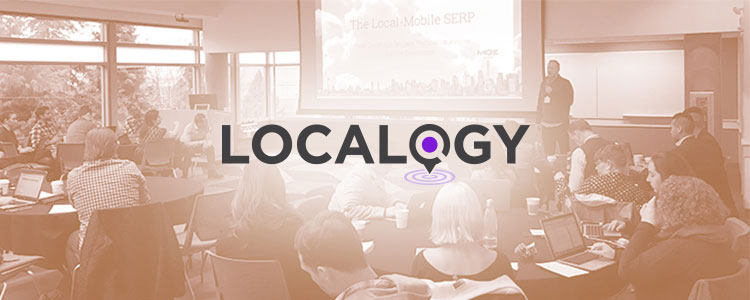LOCALOGY: Aligning Expectations Key to Client-Agency Success

The Local Search Association recently hosted a bootcamp event, bringing together marketing voices from local businesses with those from the marketing agencies and platforms who serve them. As partners of the LSA, we had the opportunity to attend and thought we’d share a few of our key takeaways from the event.
Local Marketing Automation and Expected Costs
One of the primary themes of the entire event was that business owners and agencies/platforms have misaligned expectations, and this disconnect doesn’t just occur at a single point in the customer journey. It happens at many different points, including before a business owner ever engages with a platform or agency.
At that pre-partnership point, small business owners are consuming a lot of information about local marketing. Some sources are telling business owners that local marketing is complicated. Other sources are telling them that local marketing is simple, and the resulting costs will be reflected in that simplicity.
For example, many business owners are hearing pitches that promise all of their local marketing will be “covered” for a flat monthly fee, and this “coverage” and price are possible because of marketing automation. These types of promises should be met with skepticism.
The disconnect between these promises and reality is often coming from a misrepresentation or misunderstanding of “automation”. Dalia Asterbadi broke down this misunderstanding in her presentation, “AI’s Impact on the B2B Customer Journey“. To paraphrase Asterbadi:
Automation, or AI, is a means for improving decision-making and removing bias to dramatically improve KPI values. But those decisions must be made by humans, and KPIs must be created and evaluated over time.
That is to say that local marketing automation isn’t a magic bullet for small business owners. It’s a tool for all involved to fine-tune a business’s local marketing strategy.
If agencies and platforms can share this understanding with small businesses and franchise owners, they can align the understanding of local marketing “automation” with a more accurate expectations of the associated costs.
Improving the Onboarding Process
There are no shortcuts to successful onboarding. It’s a complicated process that every agency and platform must navigate. Chris Vasquez of Aweber, an email marketing platform, spoke on the importance of personalizing the onboarding experience as one strategy for tackling this task.
Personalizing the process starts with identifying the problems you want to solve and then getting the information you need from each customer to solve those problems. One of the most effective ways of unlocking this valuable information is communicating with clients through their preferred medium or communication style. Perhaps one client prefers email while another would rather speak on the phone. Adjusting to these preferences can help facilitate trust as well as efficient communication of business goals and understanding of KPIs.
Once a client conveys their communication preferences, it allows agencies and platforms to craft custom touch points for ongoing engagement. This can be especially challenging for agencies that work with thousands of small businesses, but for some bulk outreach efforts, segments can be created to save time.
At Location3, we strive to achieve large-scale onboarding while ensuring personalization for business owners where it matters most. Part of our process is defining clear goals and expectations for each and every business owner. But as the Aweber presentation noted, working with thousands of business owners makes that personalization a difficult task.
For example, we’ve found that while an owner may express that they prefer phone calls, it can be difficult to reach them on the phone. These are the types of challenges that further complicate the onboarding process. Consistent communication and outreach can help mitigate these complications, but potholes are to be expected throughout the process. Our advice for any local marketer is to hang in there, and always keep learning more about your clients.
Conclusion
Educating clients on the realities and applications of automation and improving the onboarding experience are just a couple of ways that agencies can align their goals and expectations with the businesses they serve. Until that expectation gap is closed, SMBs and franchise owners will continue to be frustrated, disengaged, and perpetually searching for new local marketing solutions. But if agencies and platforms can start closing that gap through consistent client engagement, education, and transparency, they can start earning the trust and long-term loyalty of their clients.
Stay In Touch.
Subscribe to our monthly email newsletter.
